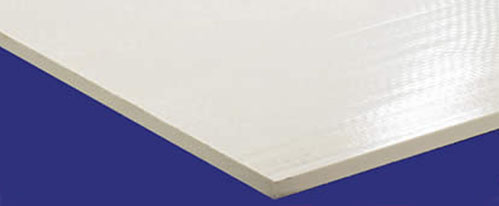How Can Polymer Composites Improve Ballistic Security?
Since the invention of firearms, mankind has tried numerous methods of protecting personnel and buildings from harm by ballistics. Polymer composites have emerged as one of the leading solutions to enhance the ballistic security of military facilities, shopfronts, banks, courtrooms, and even schools. In this blog post, we will explore bullet proofing in more detail with a focus on how polymer composites are used to enhance security.

The History of Bullet Proofing
Rigid steel plates and helmets were among the first solutions provided to soldiers on the frontline, designed to deflect high-velocity impacts from small arms fire. The drawback of this was the material’s weight. Steel armor was extremely cumbersome and impacted mobility during assaults. Soft armor comprising layers of silk bound within a canvas vest was designed to improve mobility and provide enough protection against low-velocity impacts during frontal assaults. However, the ballistic resistant qualities of this soft material were completely mitigated by wet weather.
The problem of weight and performance was similarly challenging for architects. Adding ballistic steel plating to buildings requires additional labor and significantly higher costs. When lightweight ceramics were adopted as a ballistics security solution for body armor and military aircraft during the Vietnam conflict, it became apparent that steel was no longer the optimal material for ballistic security. Yet ceramic was an unfeasible solution for architectural security solutions.
Polymer Composites for Ballistic Security
Polymer composite armor panels are engineered using ballistic grade fiberglass textiles. The fabric is impregnated with a proprietary resin matrix and cured in a controlled cycle as part of the pultrusion process. This enables the generation of paneling systems that are extremely hard and lightweight with excellent ballistic-resistant capabilities.
Conventional armor paneling aims to defeat the kinetic energy of projectiles and shatter them on impact. Polymer composite armor operates on a vastly different principle, which exceeds ballistic specifications and facilitates lighter weight ballistic security than ever before. When struck by an incoming projectile, the panel delaminates and locally deforms to disperse the impacting force. This enables bullets to be captured and retained without penetrating through to the ‘safe side’.
The mechanism of local deformation may limit the performance of panels in response to subsequent impacts, but Strongwell polymer composite armor panels are specified for multi-hit performance with various ammunition types.
Polymer Composites from Strongwell
Strongwell is one of the world’s leading suppliers of polymer composites for a broad range of challenging industries. Our HS Armor Panels provide superior resistance to ballistics and blasts tested to standards established by both the National Institute of Justice (NIJ) and the Underwriter’s Laboratory (UL). Varying thicknesses have been tested against various ammunition types, including full metal jackets and long rifle high-velocity rounds.
If you would like more information about the NIJ and UL requirements of our polymer composite HS Armor Panels, please read our brochure. Otherwise, contact us directly with any questions.